 Imagine attending a business meeting where everyone around the table whispered to you, covering their mouths and mumbling their words. Picture the frustration you would experience at the end of the meeting when everyone left with their notes but you were left struggling to figure out what the discussion was even about. For deaf individuals who read lips, this situation plays itself out daily in both personal and professional settings.
Imagine attending a business meeting where everyone around the table whispered to you, covering their mouths and mumbling their words. Picture the frustration you would experience at the end of the meeting when everyone left with their notes but you were left struggling to figure out what the discussion was even about. For deaf individuals who read lips, this situation plays itself out daily in both personal and professional settings.
Recently, Rachel Kolb wrote and starred in a video called “Can You Read My Lips” which powerfully describes her experience as a person who is deaf. The video effectively uses imagery and audio to remind hearing viewers just how much the majority of people rely on their sense of hearing to communicate. The video went viral and saw a great response within the community because not only was it well-done, but it touched on a difficult and very personal topic for many people who are deaf: lip reading.
 Studies show that only about 30%- 45% of the English language can be understood through lip reading alone. Even the most talented lip readers are not able to gather a full message based solely on lip reading, although they are often quite skilled at interpreting facial cues, body language, and context to figure it out. As you can imagine, this technique works the brain in a number of different ways and becomes exhausting over any extended period of time.
Studies show that only about 30%- 45% of the English language can be understood through lip reading alone. Even the most talented lip readers are not able to gather a full message based solely on lip reading, although they are often quite skilled at interpreting facial cues, body language, and context to figure it out. As you can imagine, this technique works the brain in a number of different ways and becomes exhausting over any extended period of time.
When a person who is deaf uses speech and is capable of reading lips, hearing people may not understand the set of challenges they are overcoming just to have a simple one-on-one conversation. The hearing person might get annoyed that they are frequently asked to repeat themselves or to speak more slowly and clearly; they might lose patience and cut the conversation short. Just because a person who is deaf can read lips does not mean that is the best way to communicate with them. The hearing community lacks an understanding of the real effort that goes into accessing conversation this way.
 Too often, I am contacted by people who are deaf who have been denied interpreters in the workplace or in schools, or in any setting, because the hearing people they approached about providing reasonable accommodation used their own judgment to decide that the deaf person’s lip reading skills would be sufficient. Communication is a human right and refusing it is a subtle form of oppression.
Too often, I am contacted by people who are deaf who have been denied interpreters in the workplace or in schools, or in any setting, because the hearing people they approached about providing reasonable accommodation used their own judgment to decide that the deaf person’s lip reading skills would be sufficient. Communication is a human right and refusing it is a subtle form of oppression.
In our modern world, with technology connecting us in ways never before thought possible, there are a wide variety of ways to communicate with another person. People who are deaf come from all walks of life and all backgrounds.
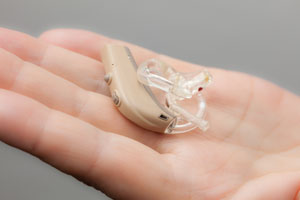
Some people are hard of hearing and have cochlear implants or use hearing aids, they generally choose to lip read and use auditory cues when possible, although they may know ASL too. Some people are late-deafened, they might choose to learn ASL but for the most part rely on auxiliary aids and lip reading. And then there are those who identify as Deaf use only ASL— choosing not to, as Rachel Kolb put it in the video “wade through the swamp” of lip reading.
Deaf/ HoH people are individuals who have each adopted their own ways of accessing the world around them. If you are truly interested in having a conversation with another person, then you want that person to be able to express themselves in a way that is comfortable for them. What is the best way to communicate with a deaf person? Just ask the individual!

Now you may be wondering what a reasonable accommodation looks like, and how you can provide this in a way that complies with the Americans with Disabilities Act. There are a number of ways to meet a deaf/ HoH person’s needs. When the person reading lips does not know American Sign Language, a qualified Communication Access Realtime Translation (CART) provider can help them effectively piece the conversation together by transcribing all the audio into text. Yes, a skilled lip reader can use context to piece together some of the conversation, but interpreters and CART providers offer an additional tool for understanding the message. This is especially necessary if the conversation is long or if the conversation involves multiple parties. In a group, keeping up with a conversation by lip reading is nearly impossible.
The “Can You Read My Lips” video did a great job stripping hearing people of their advantage, causing viewers to really ponder the reality of speech without sound. Humans desire connection, and people who lip read work harder than most to achieve that, stretching the boundaries of their senses to engage with majority culture. By acknowledging this fact and taking the little extra steps to create communication access for deaf/ HoH people, we can all help bridge the gap and bring humanity together.


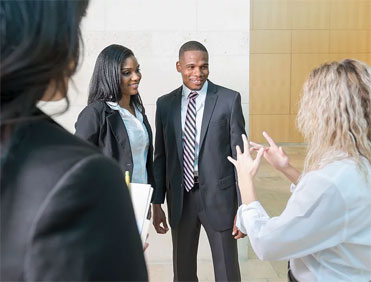






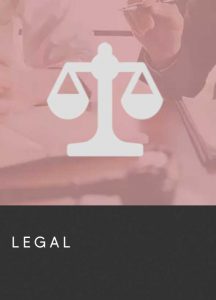



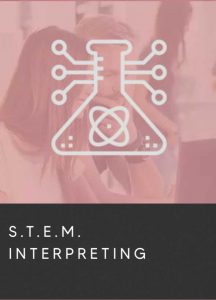

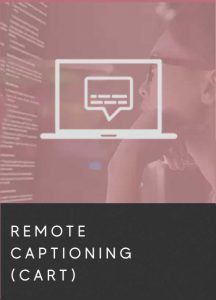

 Imagine attending a business meeting where everyone around the table whispered to you, covering their mouths and mumbling their words. Picture the frustration you would experience at the end of the meeting when everyone left with their notes but you were left struggling to figure out what the discussion was even about. For deaf individuals who read lips, this situation plays itself out daily in both personal and professional settings.
Imagine attending a business meeting where everyone around the table whispered to you, covering their mouths and mumbling their words. Picture the frustration you would experience at the end of the meeting when everyone left with their notes but you were left struggling to figure out what the discussion was even about. For deaf individuals who read lips, this situation plays itself out daily in both personal and professional settings.
 Too often, I am contacted by people who are deaf who have been denied interpreters in the workplace or in schools, or in any setting, because the hearing people they approached about providing reasonable accommodation used their own judgment to decide that the deaf person’s lip reading skills would be sufficient. Communication is a human right and refusing it is a subtle form of oppression.
Too often, I am contacted by people who are deaf who have been denied interpreters in the workplace or in schools, or in any setting, because the hearing people they approached about providing reasonable accommodation used their own judgment to decide that the deaf person’s lip reading skills would be sufficient. Communication is a human right and refusing it is a subtle form of oppression.







